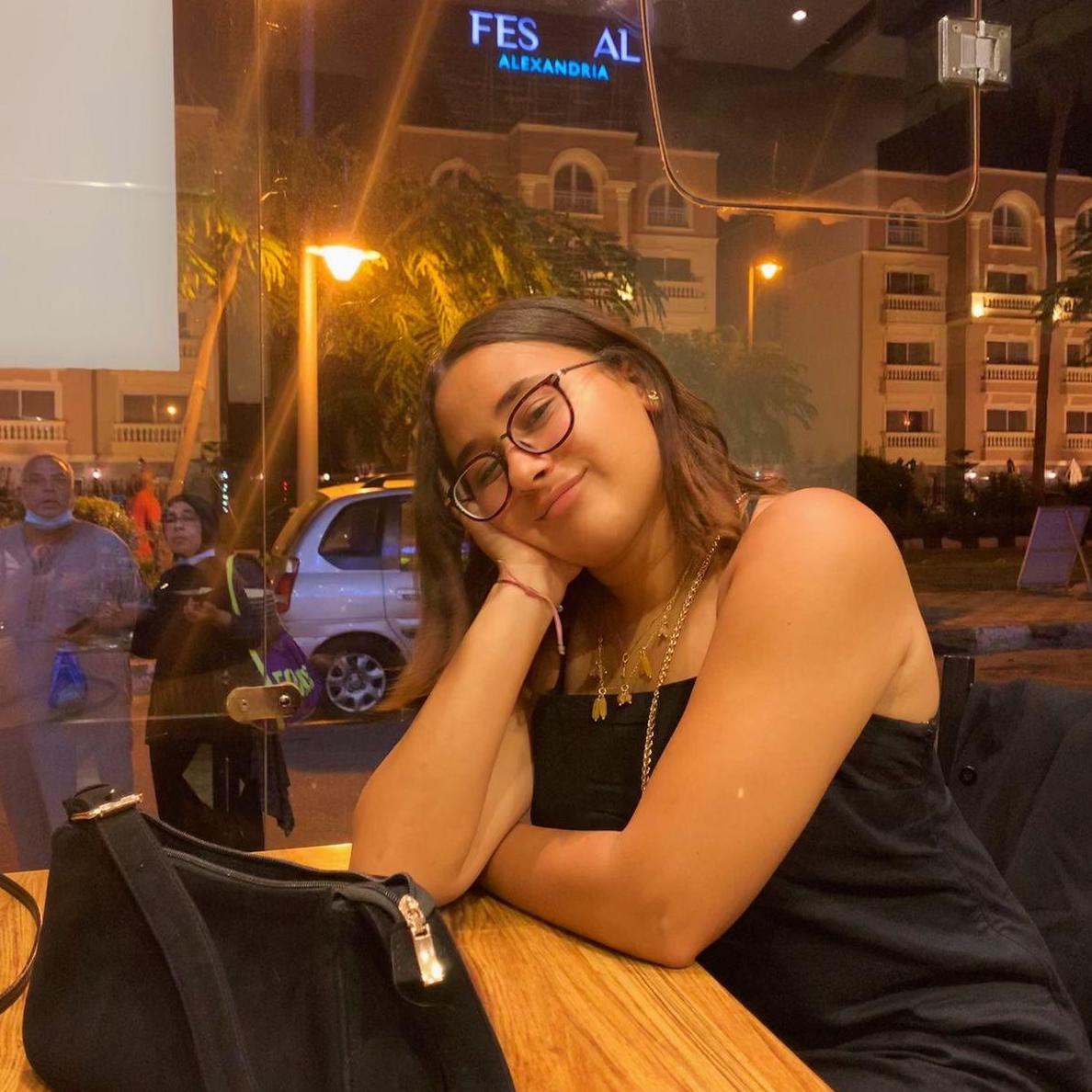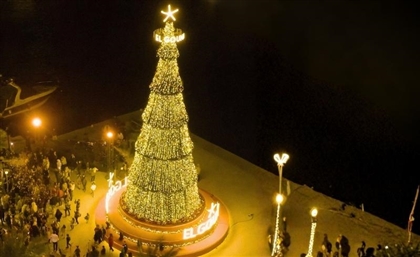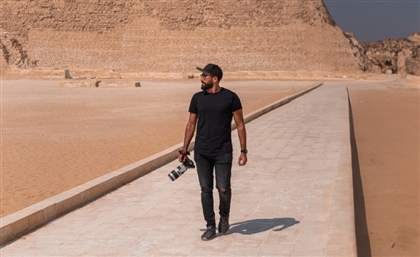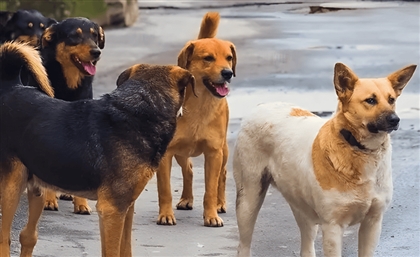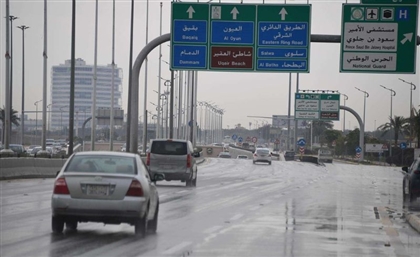How Olive Trees Came to Represent Palestinians’ Connection to the Land
Olive tree roots are nearly as immovable as Palestinian resistance.
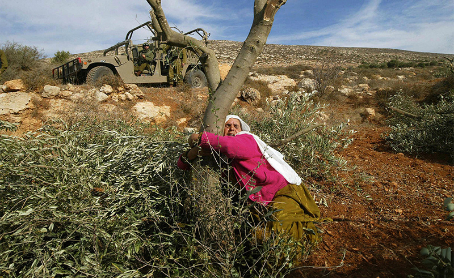
In the early hours of Saturday the 28th of October, Palestinian farmer Bilal Saleh’s body was found lying in an olive grove in the West Bank. Bilal was shot while attempting to harvest this year’s olive crop, an incident that is regurgitated yearly every olive harvest season.
In occupied Palestine, the terrain is, essentially, split into two opposing tree types: olive and pine. Each represents the existence of a people, the latter of which tries restlessly to erase thousands of years of heritage.
In a paper titled Vanishing Palestine, Ethnic Studies scholar, Lina Sharif posits: “The pine tree is associated with the Zionist project of afforesting the Promised Land into a Western European landscape aesthetic; the olive tree is the material and symbolic signification of the abject native that must be eliminated in both land and body.”
In an effort to drive Palestinians out of their land, violent settlers as well as the IDF target olive farmers and olive groves, uprooting acres upon acres of thousand-year-old olive trees. According to Visualising Palestine - a non-profit organisation dedicated to fighting for social justice through visual storytelling - 800,000 ancient Palestinian olive trees have been uprooted since 1967, an area that is approximately equivalent to 33 Central Parks in NYC. In both the settlers’ and the Palestinians' eyes, the olive tree anchors the roots of the displaced Palestinians. While a pine tree symbolises new beginnings, the olive tree sustains the presence of Palestinians, serving as an emblem of their enduring yearning for eventual return.
In the heart-wrenching poem ‘Casualty 18,’ Mahmoud Darwish recounts the tragic story of the 1956 massacre of 50 farmers in the Palestinian village of Kfar Kassem. These unsuspecting Palestinians were brutally killed for not realising that the Israeli army had unexpectedly shifted their enforced curfew to several hours earlier.
“The olive grove was once green,
At least it used to be... and the sky
was a blue forest... at least it used to be, my love
What changed it that evening? The olive grove was always green.
At least it used to be, my love. Fifty victims, at sundown
Turned it into a red pool... fifty victims.”
Mahmoud Darwish in Bardenstein, 1999 After the second Intifada in 2000, increased restrictions on the movement of Palestinians in the West Bank caused many of those employed in occupied territories to lose their jobs, and were forced to depend on local craft as a source of income. As a result, numerous individuals turned to farming as an alternative means of livelihood. It was during this time that the violence related to olive groves became more prevalent than ever. The enduring impact of this violence resurfaces each year during the harvest season, as evidenced by the brutal murder of Bilal.
After the second Intifada in 2000, increased restrictions on the movement of Palestinians in the West Bank caused many of those employed in occupied territories to lose their jobs, and were forced to depend on local craft as a source of income. As a result, numerous individuals turned to farming as an alternative means of livelihood. It was during this time that the violence related to olive groves became more prevalent than ever. The enduring impact of this violence resurfaces each year during the harvest season, as evidenced by the brutal murder of Bilal.
The significance of olives in Palestinian culture extends beyond their economic value; it lies in the deep roots of the olive trees. These roots are not easily removed, and they mirror the profound connection Palestinians have to their land, anchoring their sense of identity firmly in place throughout the occupation.
In the non-fiction novel 'Palestinian Walks' by Palestinian writer and human rights lawyer Raja Shehadeh, Raja recounts how the news of the olive trees being affected left her breathless. It reinforced the feeling that ‘they were running out of time,’ that the occupation would ultimately overcome their resistance:
“As our Palestinian world shrinks, that of the Israelis expands, with more
settlements being built, destroying forever the wadis and cliffs, flattening
the hills, and transforming the precious land that many Palestinians will never know.” Despite the ongoing uprooting of both trees and humans, many Palestinians draw strength from the unwavering nature of their olive trees, manifested in the form of 'Sumud' resistance. As long as the olive tree remains firmly rooted in the ground, so does the Palestinian's determination to return. No matter how harsh and invasive the Zionist occupation becomes, Palestinian blood, much like the roots of their olive trees, runs deep and immovable.
Despite the ongoing uprooting of both trees and humans, many Palestinians draw strength from the unwavering nature of their olive trees, manifested in the form of 'Sumud' resistance. As long as the olive tree remains firmly rooted in the ground, so does the Palestinian's determination to return. No matter how harsh and invasive the Zionist occupation becomes, Palestinian blood, much like the roots of their olive trees, runs deep and immovable.
“I shall carve the record of all my sufferings, and all my secrets,
On an olive tree, in the courtyard, of the house...,
I shall carve the number of each deed of our usurped land.
The demolished houses of its people, my uprooted trees,... And to remember it all,
And to remember it all,
I shall continue to carve all the chapters of my tragedy,
and all the stages of the disaster, from beginning to end,
On the olive tree, in the courtyard of the house”
Tawfiq Zayyad in Bardenstein, 1998
The practice of olive harvesting, and subsequently pressing, is a tradition passed down through the generations in Palestinian culture. Beyond serving as a symbol of ‘Sumud’ and resistance, the olive tree also represents family and evokes cherished memories of the brightest days of many Palestinians' childhood.
 “My father inherited these trees from his father, and now we harvest them,” says Deir Qaddis olive farmer, Jamal Nasser, in YouTube documentary Palestine’s Olive Harvest: A Timeless Tradition. “When we were children, we used to come to the groves with the adults as a sort of field trip. Now, we’ve grown up and brought our children with us to the grove. It’s like a legacy that is passed down between generations.”
“My father inherited these trees from his father, and now we harvest them,” says Deir Qaddis olive farmer, Jamal Nasser, in YouTube documentary Palestine’s Olive Harvest: A Timeless Tradition. “When we were children, we used to come to the groves with the adults as a sort of field trip. Now, we’ve grown up and brought our children with us to the grove. It’s like a legacy that is passed down between generations.”
The globally prized value of Palestinian olive oil is, consequently, not merely the result of its vibrant flavour and scent, but rather because it stands to represent hope and integrity. The oil of Palestinian olives is one people guard with their lives, and so it is one the whole world has come to prize. The Palestinian olive is, as a result, priceless.
- Previous Article Italian-Palestinian Duo No Input Debuts Eponymous Electro EP
- Next Article Egyptian Embassies Around the World
Trending This Week
-
Dec 12, 2025







